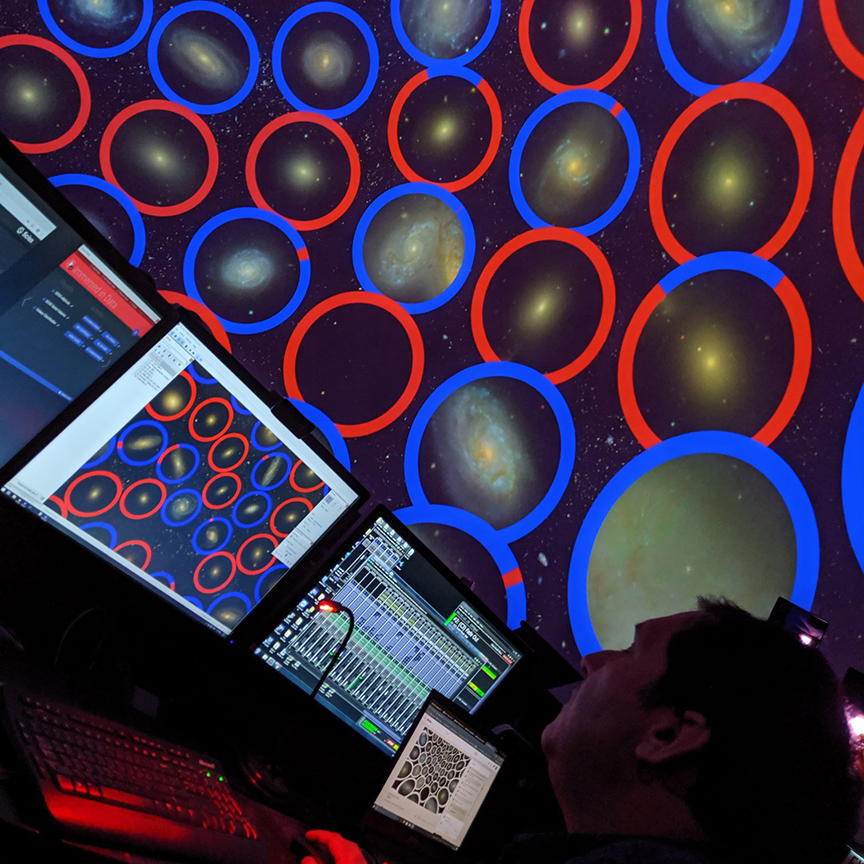Adler Skywatch: October 2024
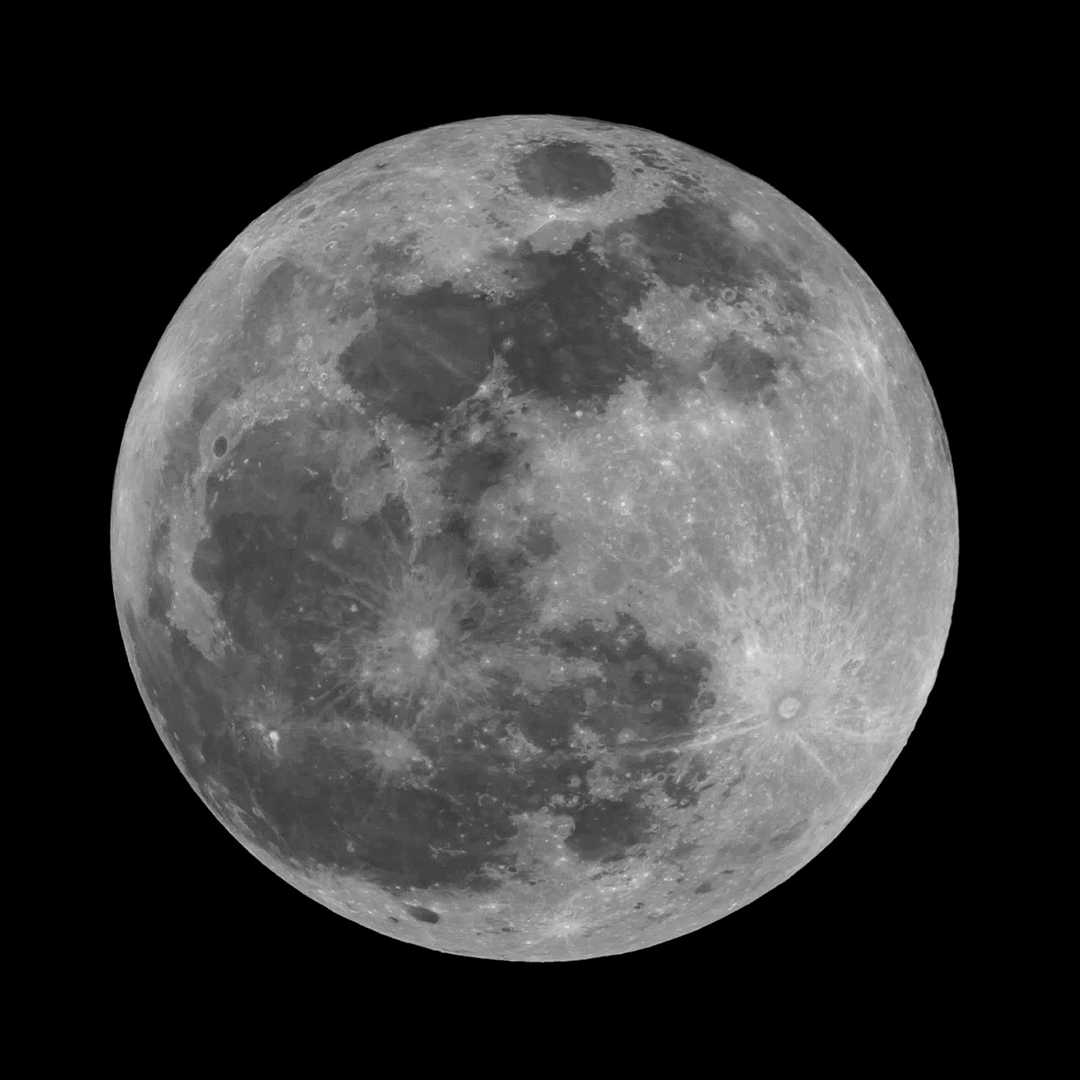
Header image: The full harvest supermoon illuminates the night sky on September 17, 2024. Image credit: Nick Lake
Check out what’s up in the night sky this October!
See Comet C/2023 A3 (Tsuchinshan-ATLAS)
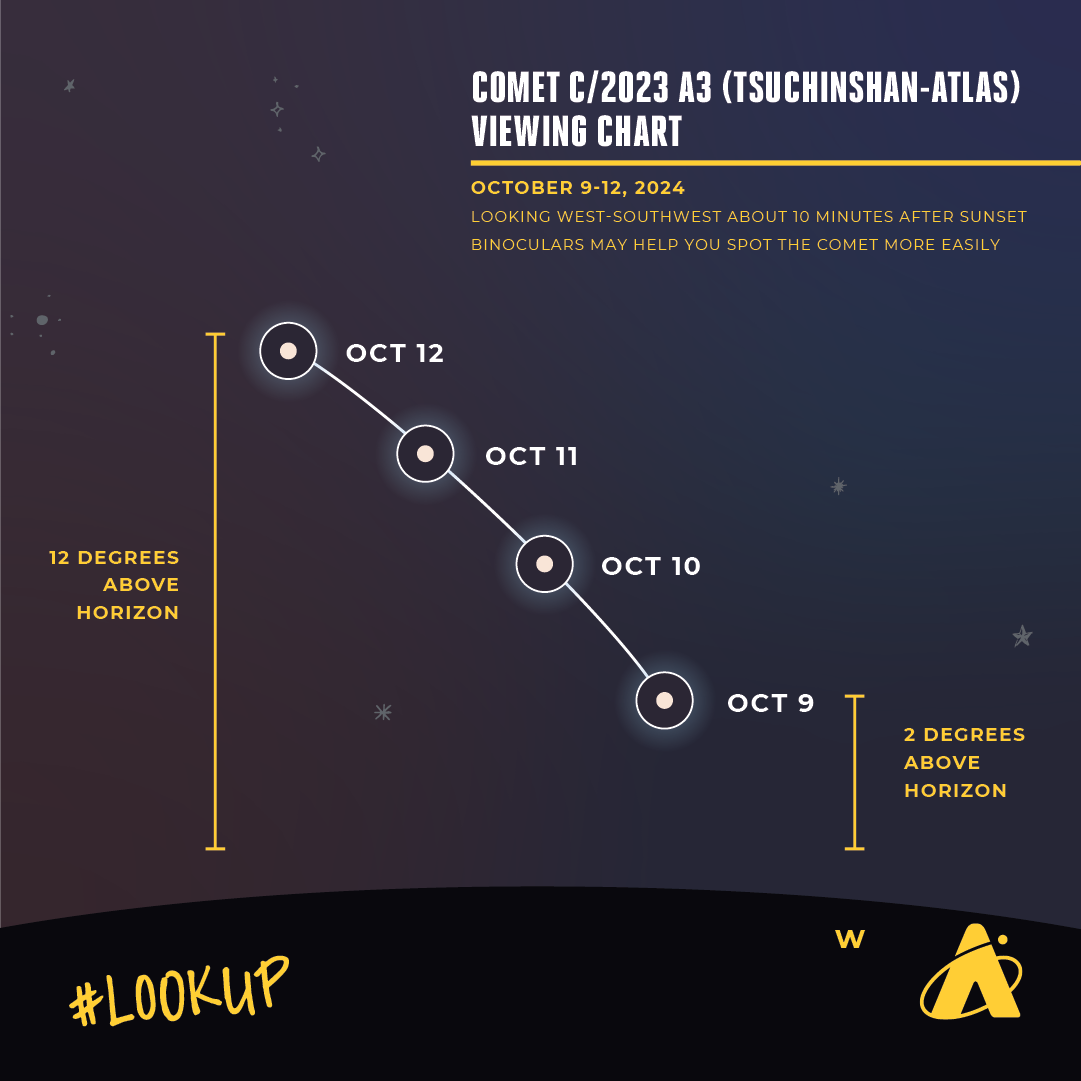
A new comet–with a long name–may become a memorably bright celestial object this month, October 2024.
Comet C/2023 A3 (Tsuchinshan-ATLAS) becomes the latest bright comet to grace our skies in the inner solar system. Comet viewing opportunities abound, especially near the middle of the month. On October 12 and October 13, look for it about 10 degrees above the west-southwest horizon only after the Sun has fully set. The comet will be around magnitude +2, possibly around magnitude +1. It will begin to dim after then. The Moon’s light may also interfere a bit with the brightness of the comet around mid-month.
By the end of the month, the comet will be a lot dimmer, probably around magnitude +6, which is at the human limit of naked-eye visibility under a very dark sky. Viewers in light-polluted locations will definitely need binoculars or a small telescope to see it then. But do not use binoculars or a telescope until after the Sun has fully set.
If you haven’t seen a comet before, they look different from stars or planets. Stars and planets appear as dots of light. Comets are more fuzzy, and with a wispy tail that points away from the Sun.
Supermoon Sighting
Last month’s full Moon was about 223,000 miles away from Earth, which is considerably closer than the average Earth-to-Moon distance of 239,000 miles—making it a supermoon. This month’s full Moon will get even closer to Earth than last month’s, making it the closest full supermoon of 2024! A full supermoon is estimated to appear up to 30 percent brighter and nearly 15 percent bigger than a full Moon at its farthest from Earth.
One description of the size difference between a full Moon and a supermoon compares it to a nickel and a quarter. Now, it’s easy to spot the difference when a nickel and a quarter are side-by-side. But the Moon appears by itself in the sky, so it’s not as easy to compare the difference in size or brightness.
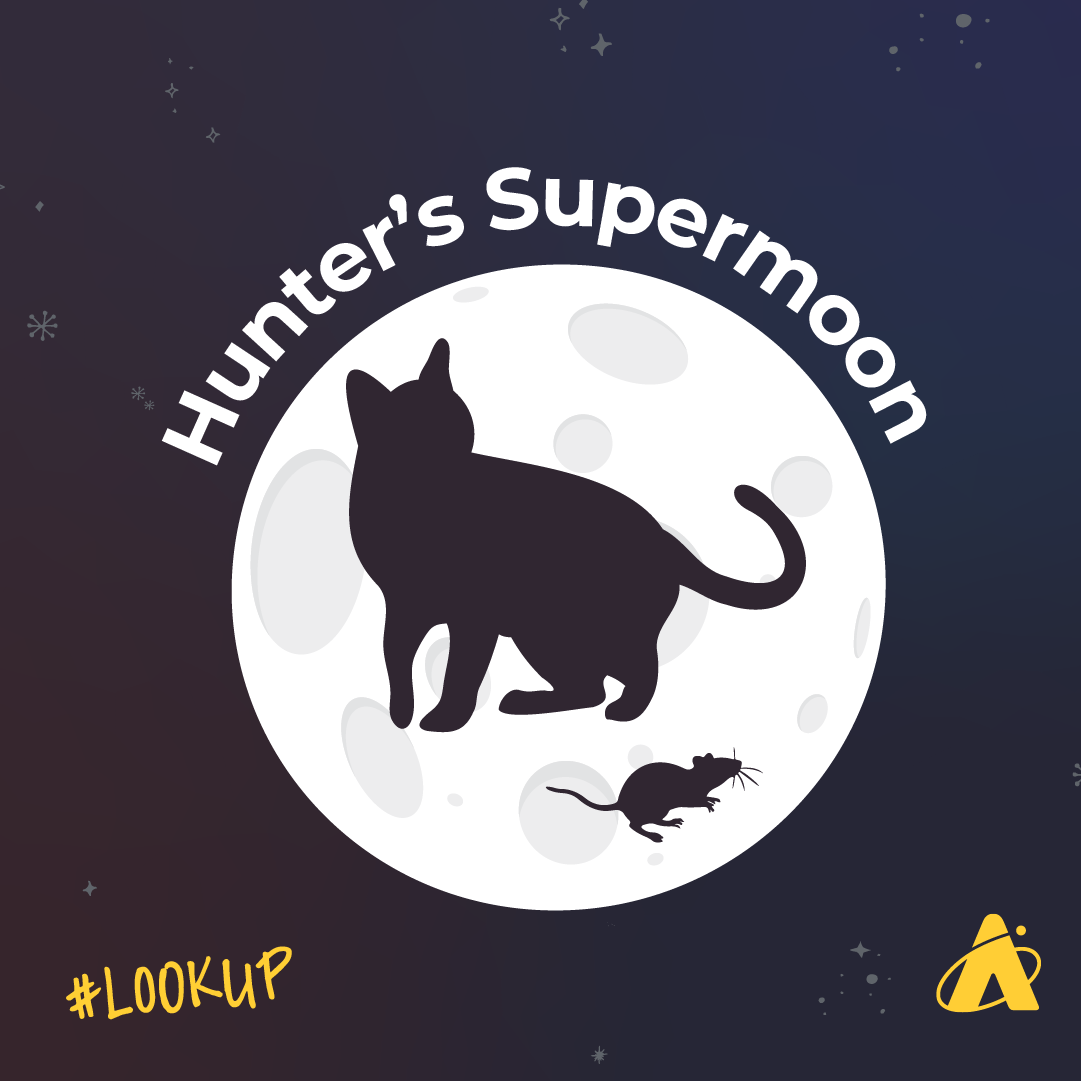
Planet Spotting in October
This month, the brightest planet, Venus, sets in the west-southwest about 75 minutes after the Sun on October 1, and nearly two hours after the Sun by October 31. It gets brighter every day this month too, reaching a brilliant magnitude of minus four around October 24. Look for Venus at least a half-hour after the Sun has entirely set, about ten degrees above the west-southwest horizon early in the month, and about ten degrees above the southwest horizon late in the month. On October 5, spot it above and slightly to the right of a slim, waxing crescent Moon.
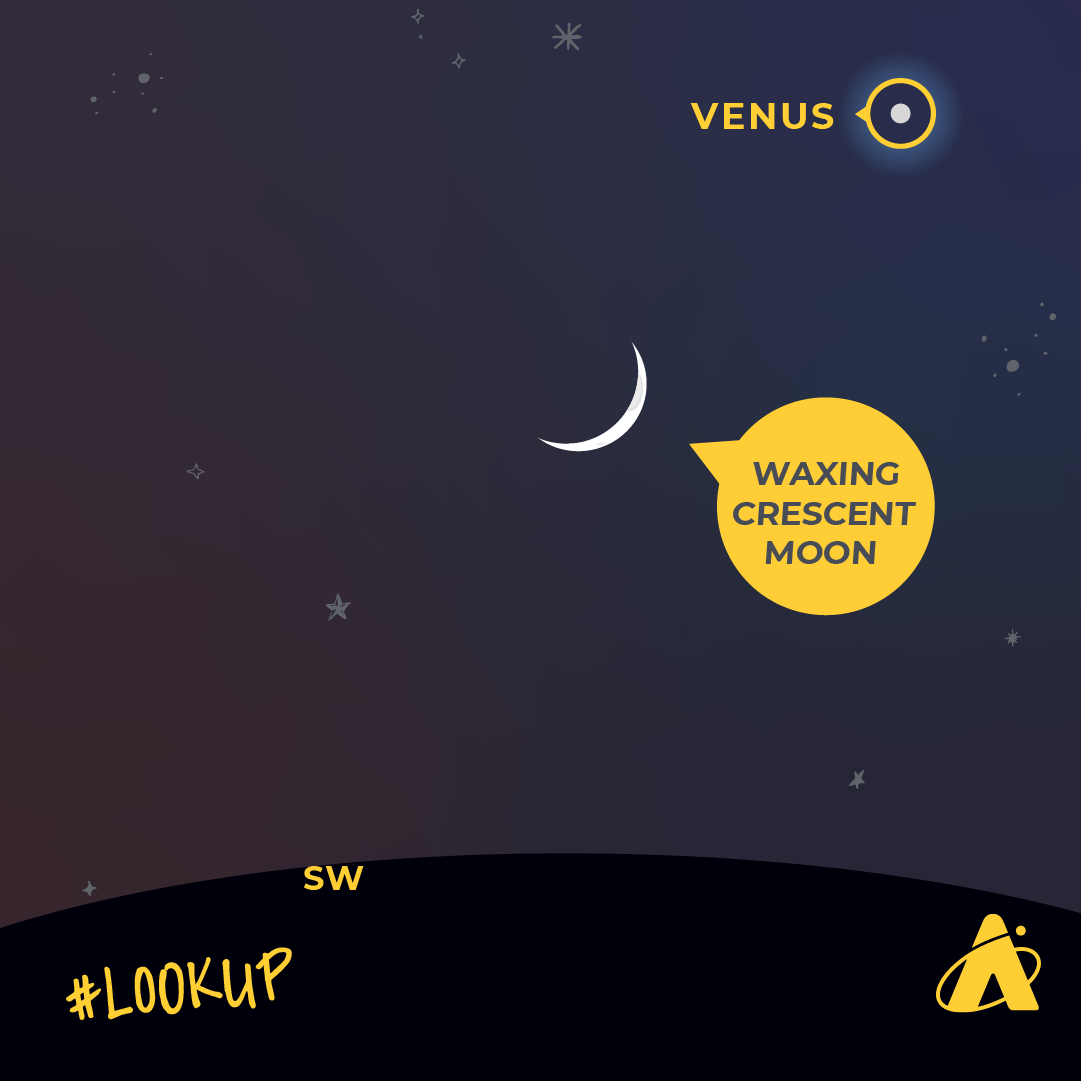
Next, Saturn is low in the east-southeast, just as the Sun is setting in the west-southwest. It’s brighter than magnitude one all month long. At the start of the month, it’s about 50 degrees high in the south at 11:00 pm and at 9:00 pm by month’s end. Saturn sets in the west-southwest about 4:00 am early in the month, and by about 2:00 am by month’s end. On October 4, see Saturn and the Moon traveling south together in the night sky.
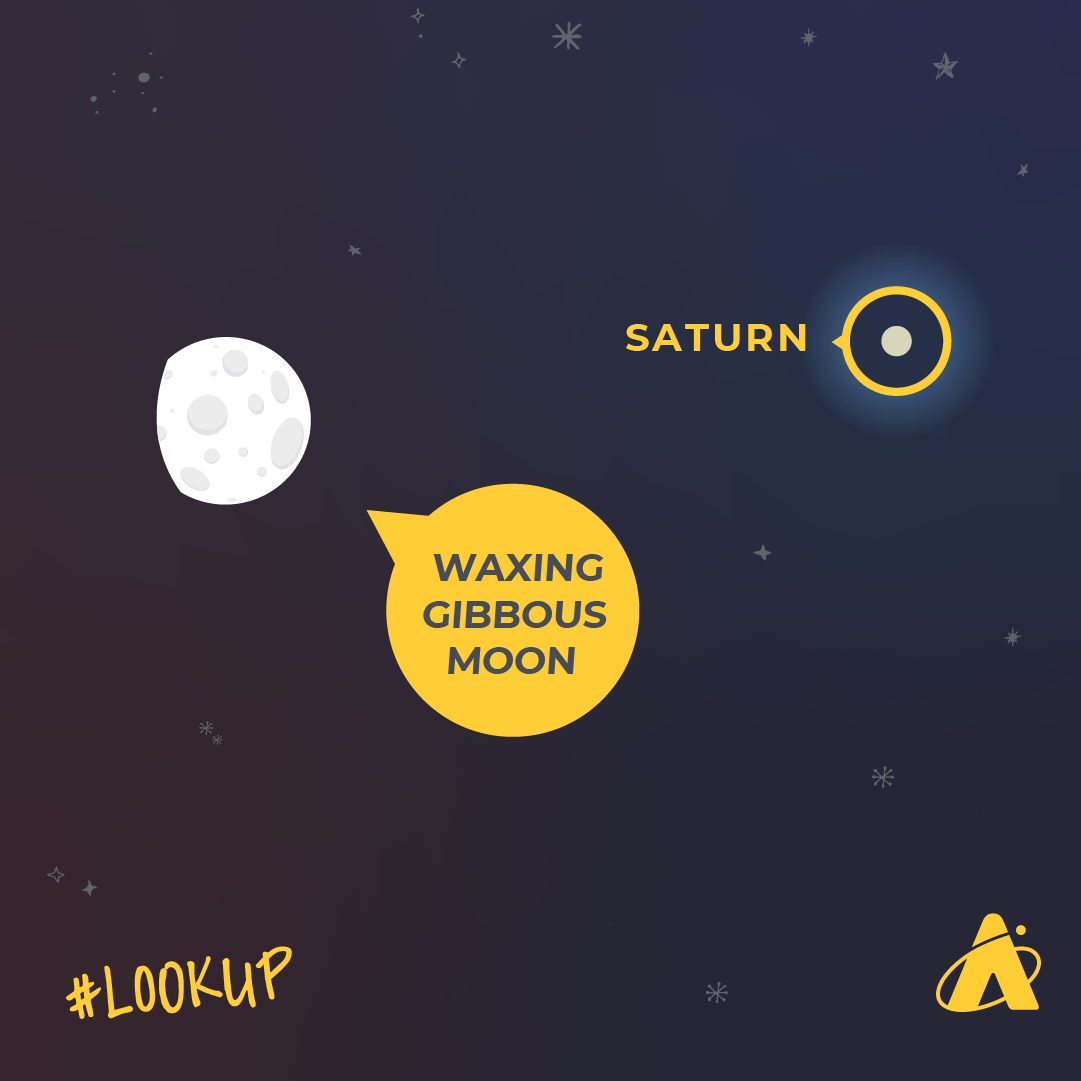
The bright planet Jupiter rises in the east-northeast around 11:00 pm on the first of October and around 9 pm by October 31. Look about ten degrees below Jupiter to see the constellation Orion, the Hunter. It looks like a slightly squashed rectangle of four bright stars, with a small row of three stars across its middle creating his famous belt. But Jupiter outshines them all. After midnight on October 21, a waning gibbous Moon appears near Jupiter. It reaches about 65 degrees high in the southwest sky, when it starts to fade in dawn’s light.
Mars rises in the east-northeast around midnight at the start of the month and closer to 11:00 pm by month’s end. It shines at about magnitude zero. Mars spends the month not far from Pollux and Castor, the brightest stars in the constellation Gemini, the Twins. Mars appears below and to the left of the much-brighter planet Jupiter. The two planets are roughly 25 degrees apart early in the month and move further apart each night. By month’s end, they are nearly 40 degrees apart. In the morning darkness of October 23–24, Mars is near the last-quarter Moon. It gets about 70 degrees high in the southern sky as morning twilight blots it out.
On October 31, you may see a trio of objects in a vertical line in the eastern sky. While Castor, Pollux, and Mars may look like Orion’s belt, the constellation of Orion, the Hunter is actually just to the right of the grouping.
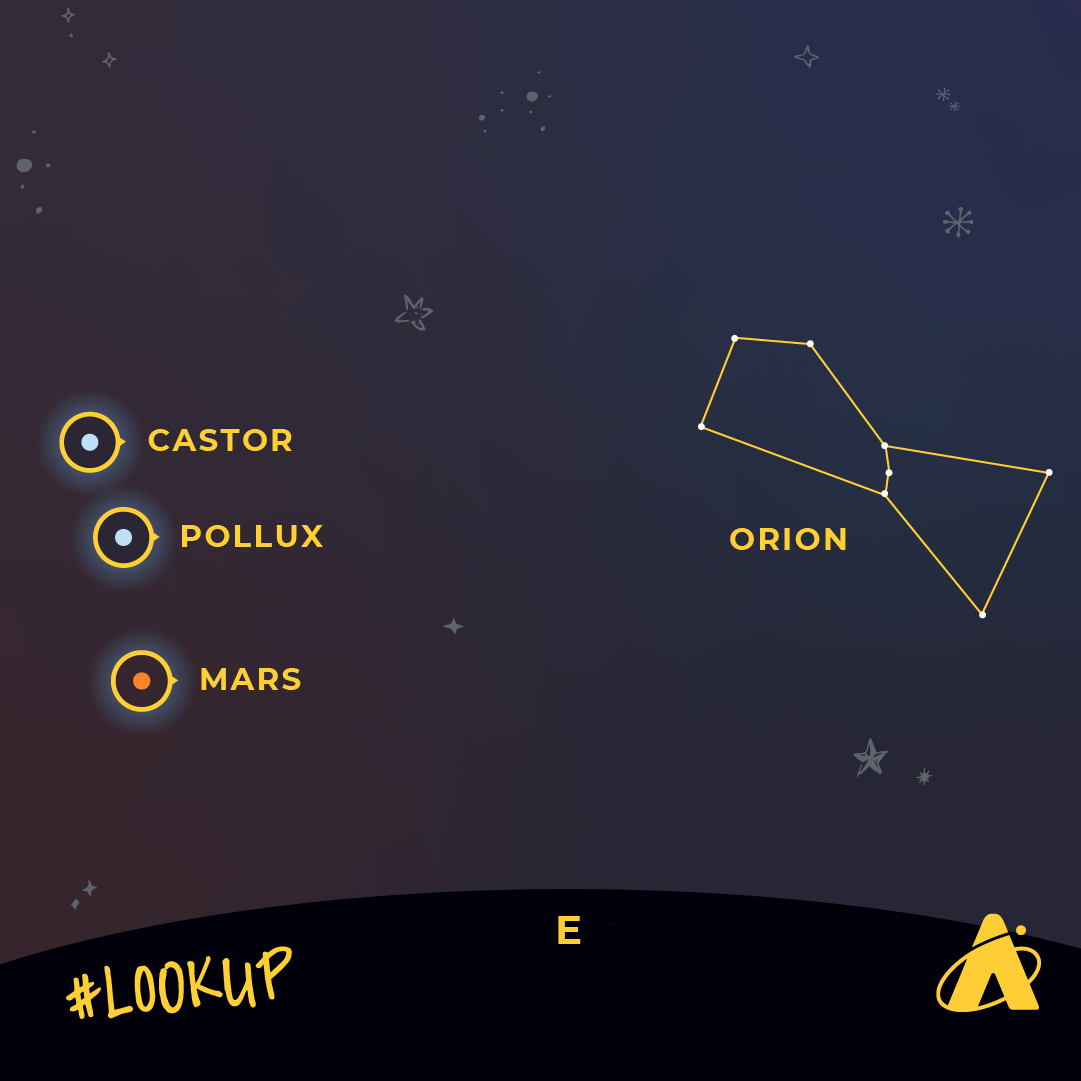
The planet Mercury is mostly hidden in the Sun’s glare this month.
Under extremely clear, dark skies, a human with very good vision can see night-sky objects slightly dimmer than magnitude six brightness. This month, the planet Uranus shines brighter than 5.7 magnitude (the smaller the number, the brighter the magnitude). So theoretically, Uranus may be visible this month, by people with excellent eyesight, in extremely dark, clear skies, far from city lights. It appears about six degrees west of the Pleiades star cluster, which doesn’t get above the eastern horizon this month until about 10:00 pm. If you’re serious about looking for this planet, you’ll want to study a star chart in advance—and maybe use a pair of binoculars.
Moon Phases
New Moon: October 2
First Quarter Moon: October 10
Full Moon: October 17
Last Quarter Moon: October 24
Please note: these descriptions are for the Chicago area, using Central time.
Subscribe To Skywatch Wednesday This October!
Tour the sky with the Adler Planetarium’s Theaters Manager, Nick, in Skywatch Wednesday. Nick uses cutting edge visualizations, NASA images, and astrophotography to show you what you can see in the night sky throughout the year.
Check out Nick’s latest episode for your guide to autumn stargazing! Nick explains how to see five planets and their moons, constellations, and stars that are visible during the fall 2024 season.
Learn From Our Astronomy Educators!
Watch exclusive live episodes of Sky Observers Hangout this October! Learn how to observe upcoming cosmic happenings, enhance your astrophotography skills, and see celestial objects through a telescope virtually with our astronomy educators.
Watch our livestream on October 15, 2024 to learn all about the long-period comet gracing our sky this month. Our astronomy educators Michelle and Hunter will tell you what makes these icy bodies tick and how you can catch a view of this comet before it is propelled back out to the far reaches of the solar system—possibly never to be seen again. Weather permitting, we may show a live view of Comet C/2023 A3 as it sets over Chicago’s skyline.






